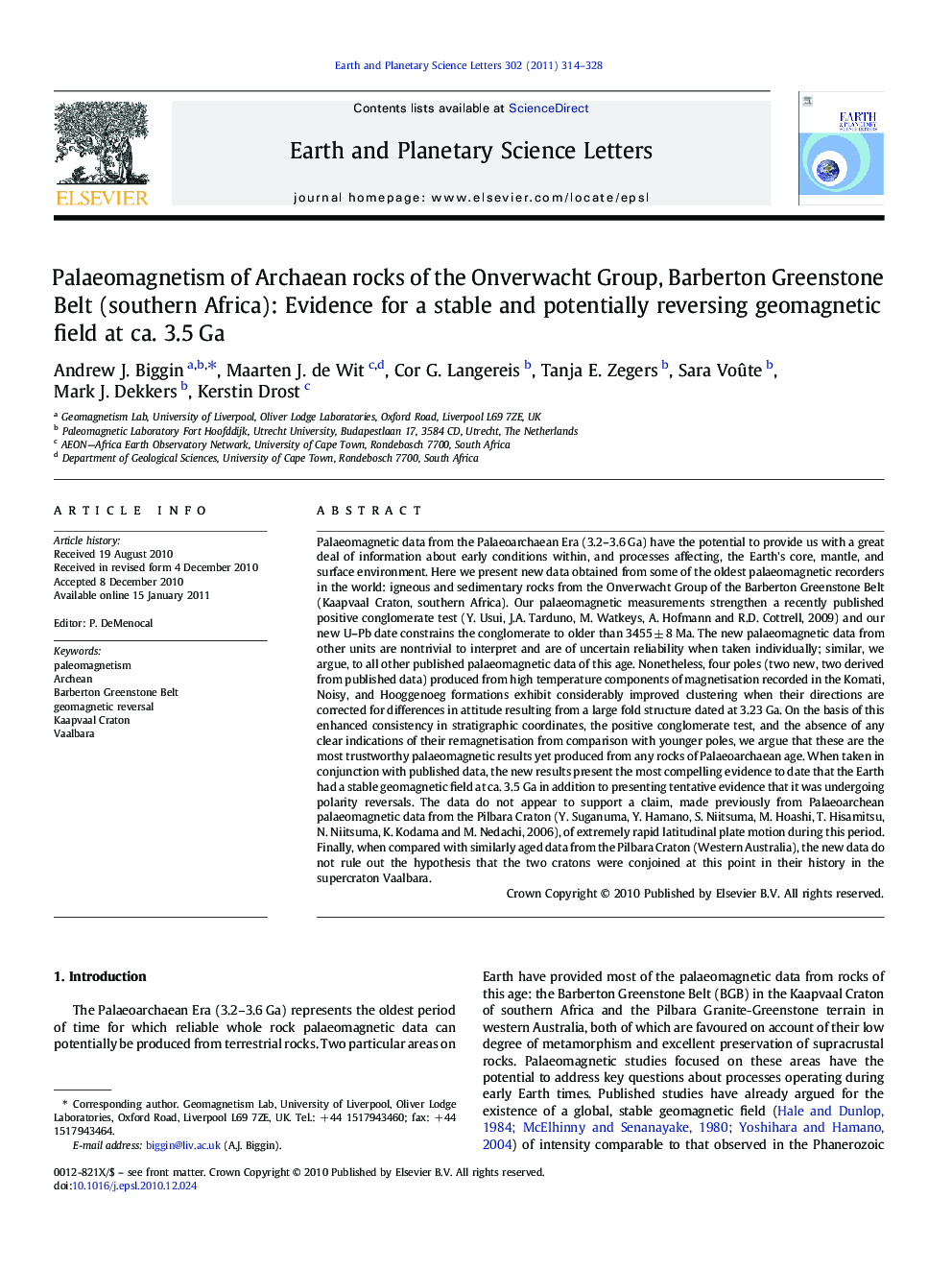| کد مقاله | کد نشریه | سال انتشار | مقاله انگلیسی | نسخه تمام متن |
|---|---|---|---|---|
| 4678098 | 1634835 | 2011 | 15 صفحه PDF | دانلود رایگان |

Palaeomagnetic data from the Palaeoarchaean Era (3.2–3.6 Ga) have the potential to provide us with a great deal of information about early conditions within, and processes affecting, the Earth's core, mantle, and surface environment. Here we present new data obtained from some of the oldest palaeomagnetic recorders in the world: igneous and sedimentary rocks from the Onverwacht Group of the Barberton Greenstone Belt (Kaapvaal Craton, southern Africa). Our palaeomagnetic measurements strengthen a recently published positive conglomerate test (Y. Usui, J.A. Tarduno, M. Watkeys, A. Hofmann and R.D. Cottrell, 2009) and our new U–Pb date constrains the conglomerate to older than 3455 ± 8 Ma. The new palaeomagnetic data from other units are nontrivial to interpret and are of uncertain reliability when taken individually; similar, we argue, to all other published palaeomagnetic data of this age. Nonetheless, four poles (two new, two derived from published data) produced from high temperature components of magnetisation recorded in the Komati, Noisy, and Hooggenoeg formations exhibit considerably improved clustering when their directions are corrected for differences in attitude resulting from a large fold structure dated at 3.23 Ga. On the basis of this enhanced consistency in stratigraphic coordinates, the positive conglomerate test, and the absence of any clear indications of their remagnetisation from comparison with younger poles, we argue that these are the most trustworthy palaeomagnetic results yet produced from any rocks of Palaeoarchaean age. When taken in conjunction with published data, the new results present the most compelling evidence to date that the Earth had a stable geomagnetic field at ca. 3.5 Ga in addition to presenting tentative evidence that it was undergoing polarity reversals. The data do not appear to support a claim, made previously from Palaeoarchean palaeomagnetic data from the Pilbara Craton (Y. Suganuma, Y. Hamano, S. Niitsuma, M. Hoashi, T. Hisamitsu, N. Niitsuma, K. Kodama and M. Nedachi, 2006), of extremely rapid latitudinal plate motion during this period. Finally, when compared with similarly aged data from the Pilbara Craton (Western Australia), the new data do not rule out the hypothesis that the two cratons were conjoined at this point in their history in the supercraton Vaalbara.
Research Highlights
► Increased confidence in 3.5 Gyr palaeomagnetic records from Barberton area.
► The 3.5 Gyr field appears stable and may have undergone polarity reversals.
► Horizontal rates of crustal motion may have been comparable to today.
► Existence of the Vaalbara Supercraton at 3.5 Gyr cannot be ruled out.
Journal: Earth and Planetary Science Letters - Volume 302, Issues 3–4, 1 February 2011, Pages 314–328